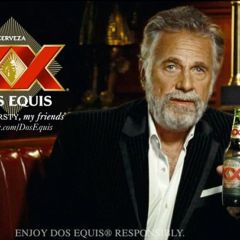A print ad released by Sebamed India and their ad films seem to have garnered interest and commentary among the marketing & advertising folks on social media. Sebamed is German skin care brand marketed by USV in India. The ad is for their cleansing brand and directly names brands such as Lux and Rin in the print ad comparing their pH levels.

On their website, other leading brands such as Dove and Santoor are also named. The benefit of pH5.5 is also sought to be explained.

Their TVCs take on the industry practice of using celebrity endorsements and metaphors such as ‘doodh jaise safed‘ (‘as white as milk’).
Agency: The Womb
I liked the strategy and the execution. Here’s why:
Focus on niche audience: I wasn’t aware of Sebamed prior to this campaign. But reading about them online and checking out their listings on e-commerce sites, it is clear that their product range caters only to a super-premium audience in skin care and baby care. They must be having a loyal customer base as both the above categories are seen as for ‘specialists’ among those willing to shell out serious monies for such.
Different target audience: A 100g bar of Sebamed Cleansing Bar is listed at Rs.199 on Big Basket. Clearly, a majority of the buyers of brands named in the print or TV adverts will not switch and become regular customers at that price point. But a small creamy layer (no pun intended) of those in the skin care market will now consider the brand, especially for sensitive skin and baby care. The mass media campaign gives visiibility to a larger audience.
Timing: the post-COVID world has heightened our sensitivities towards hygiene. Many of us don’t mind paying extra for the reassurance of safety – be it a mask or hand sanitiser. In that context, anchoring the message on ‘expert care’ makes sense.
Creating dissonance: I am sure most buyers don’t usually care about skin pH. But for the audience it is seeking to address the concept of acidic and alkaline is familiar. Dramatising the ‘purity’ of Sebamed in that lens is bound to create dissonance.
Direct comparison with relevance: comparative advertising is not new. Most of the time, a brand choses to show an un-named competitor by referring to them as a ‘leading’ brand or other brand with some colour cues. Naming a competitor in advertising is also not new. In 2010, Rin created an ad naming Tide. I had highlighted the ASCI (Advertising Standards Council of India) code on comparative advertising back then:

I am not sure if the same or similar codes apply now. But the point is the comparison is not without credibility. A few years ago, during the launch of iPhone 4S in India, Micromax attempted to position itself as a smarter alternative to the expensive iPhone. Naturally, hardly anyone would take such a comparison seriously. In this case, it is the reverse – an expensive brand framing the context with a popular brand.
I guess the competitors named in the Sebamed ad will respond in some manner, including the legal route. But I am not sure if it will lead to an exodus from any of the brands – save for the top end who may want to experiment. However, calling into question the harshness of the brands and potentially creating dissonance is something the brands cannot ignore. Do share your views.





